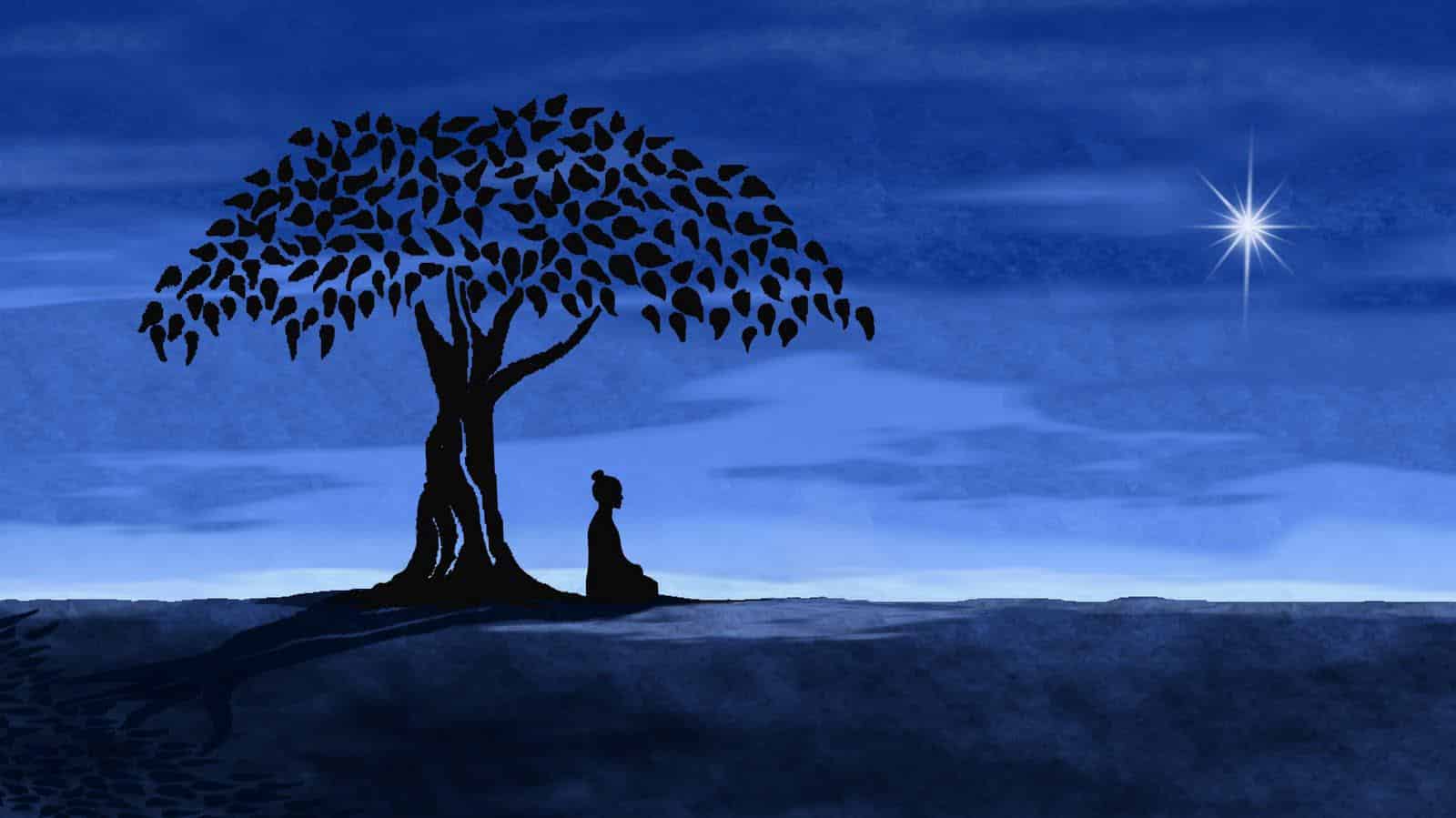Samadhi is the 8th and final limb of yoga. Samadhi is a state of concentrated meditation that transcends the intellect, mind, and body and complete detachment from the physical world (meaning consciousness becomes detached from the body). This final stage of yoga is also known as enlightenment and can be achieved in Corpse Pose, after meditation involving Dharana and Dhyana. In this state, the yogi can suspend consciousness away from the body, being at one with the environment and surroundings while not being limited to physical restraints of the body. Samadhi represents a state of enlightenment and over time the yogi obtains a ceaseless state of transcendent bliss.
In Buddhism, Samadhi is known as the 8th wheel of the eightfold path referring to right concentration. Buddhists believe that this right concentration leads to extraordinary intelligence and even superpowers. But these are simply distractions for the practitioner from the goal of Moksha, or liberation. Samadhi leads to a pleasantness in your current life, knowledge of the divine third eye by concentration on light, clear comprehension of the fluctuations of feelings, perceptions, and thoughts through mindfulness, and the elimination of the 5 Skandha’s (attachments to matter, sensation, perception, mental habits, and discernment). In Buddhism, Samadhi does not refer to enlightenment, rather a state of concentrated meditation that leads to enlightenment. Nirvana is enlightened freedom from attachment and Samsara through Moksha.
Samadhi is a state of supreme detachment, where consciousness is free to leave the body and can expand beyond the borders of the physical corpse of the consciousness. It is a supreme state of bliss that is experienced in Savasana, or in meditation after a yoga practice is completed. This is why you don’t skip Savasana! Meditate after your yoga practice, it is far more powerful after the body has been tempered. The sensations and insights that flow during these meditation can alter your perspective and even mental processes that can change. It is integral to the yoga practice to rest in Savasana and meditate; they are the most important things you can do to amplify the healing and regenerative qualities of yoga.
Samadhi is intricately related to consciousness. It can be described as full awareness, perfect concentration, or an altered state of consciousness characterized by ananda and sukha (bliss and joy). Vyasa, one of the authors of the Mahabharata, said ‘yoga is Samadhi’. It is ultimately complete control over the fluctuations of consciousness including distractions and normal functionality of the nervous system and conscious experience.
Patanjali said that Samadhi has three different aspects: Savikalpa, Asamprajnata, and Nirvikalpa. In Savikalpa the mind is still conscious and the imagination is active and the state can be described as holding onto the imagination with effort. Asamprajnata is a step forward from Savikalpa and is not quite gross awareness, but is a heightened state of conscious awareness. Nirvikalpa is the highest transcendent state of consciousness, the highest of the heights of yoga. It is an engrossing awareness where all things are one and pure unadulterated bliss, wholeness, and perfection are experienced. It is pure joy, freedom, and steady bliss in the knowledge of awareness.
Samadhi is like balancing blocks on top of one another, where it takes years to learn all of the nuances of each block and how they work together. Simply allowing the body to meditate is not enough; full concentration and focus is required to obtain the state of pure freedom.
The final liberation of the yogi comes at the time of death, known as mahasamadhi and is a controlled exit of the consciousness from the body to merge consciousness with the divine. Maha means great.
I would like to dedicate this post to BKS Iyengar, who died this morning, one of the greatest (yoga) teachers the world has ever known. My hope is that he found mahasamadhi in his last hours and that he has found the freedom and peace beyond. He brought yoga into the west and gave everyone seemingly limitless knowledge on even the most minuscule and minute details. He gave us in the west the opportunity to scale the heights of Raja yoga and changed the world for the better. Thanks.


1 thought on “The 8 Limbs of Yoga (Part 8: Samādhi | समाधि)”